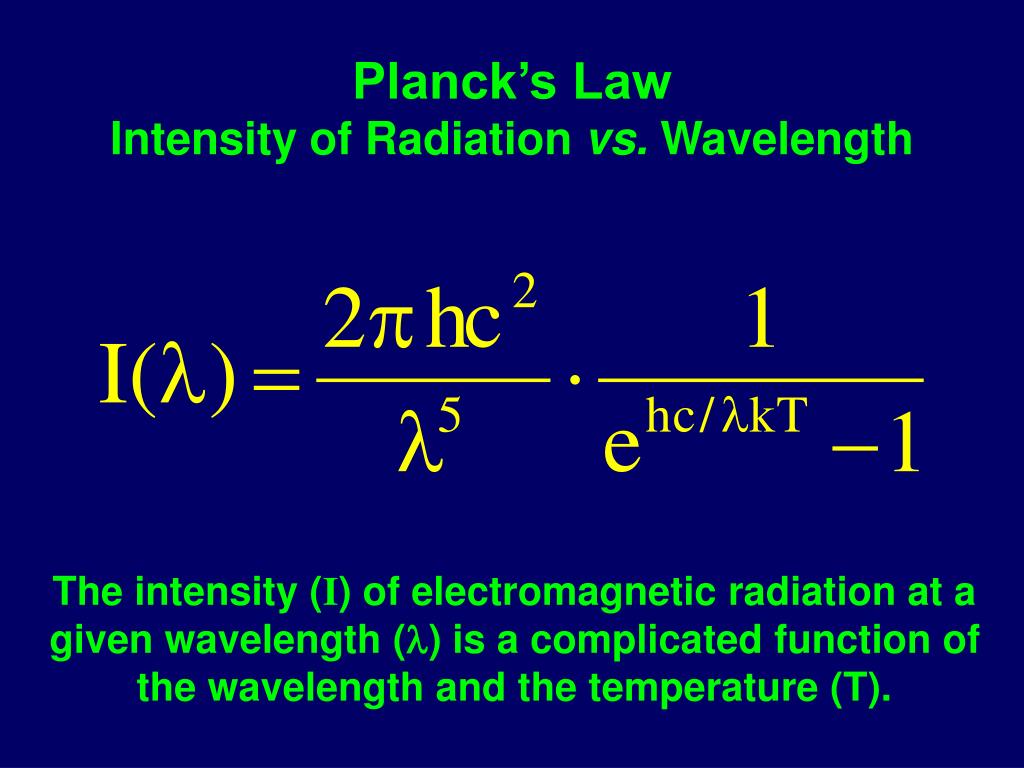
Radiance is also sometimes called intensity, especially by astronomers and astrophysicists, and in heat transfer. Intensity can be found by taking the energy density (energy per unit volume) at a point in space and multiplying it by the velocity at which the energy is. This can cause confusion in optics, where intensity can mean any of radiant intensity, luminous intensity or irradiance, depending on the background of the person using the term. In photometry and radiometry intensity has a different meaning: it is the luminous or radiant power per unit solid angle. As one important class of the noninterferometric propagation-based phase retrieval techniques for optical wavefield, the Transport-of. The intensity should then be defined as the magnitude of the Poynting vector. Equation For Light Intensity Vs Distance. For example, an evanescent wave may have a finite electrical amplitude while not transferring any power. The treatment above does not hold for arbitrary electromagnetic fields. It can be done by using Eulers equation to find the particle velocity. I = c n ε 0 2 | E | 2, is the vacuum permittivity.įor non-monochromatic waves, the intensity contributions of different spectral components can simply be added. Measuring the sound intensity is an integral part of determining the sound power. The resulting vector has the units of power divided by area (i.e., surface power density). The light energy flux may be expressed in terms of the incident x-ray energy flux and the x-ray absorption and conversion properties of the scintillator (7,8,9). In general, Easy running is running at a comfortable, conversational pace. Luminous Intensity Luminous intensity is defined as dId / d, where d is the luminous flux (light energy flux in watts per m2) emitted within a solid angle d. Intensity can be found by taking the energy density (energy per unit volume) at a point in space and multiplying it by the velocity at which the energy is moving. Intensity: Generally in the range of 59-74 of VO2max or 65-79 of your HRmax. The word "intensity" as used here is not synonymous with " strength", " amplitude", " magnitude", or " level", as it sometimes is in colloquial speech. For example, one could calculate the intensity of the kinetic energy carried by drops of water from a garden sprinkler. Intensity can be applied to other circumstances where energy is transferred. Intensity is used most frequently with waves such as acoustic waves ( sound) or electromagnetic waves such as light or radio waves, in which case the average power transfer over one period of the wave is used. In the SI system, it has units watts per square metre (W/m 2), or kg⋅ s −3 in base units. If the companys total asset balance was 450,000. Suppose that a company has 1 million in revenue during Year 1. In physics, the intensity or flux of radiant energy is the power transferred per unit area, where the area is measured on the plane perpendicular to the direction of propagation of the energy. Capital Intensity Ratio Calculation Example. A 12, 1932 (1995).For other uses, see Intensity (disambiguation). Kothleitner, Ultramicroscopy 102, 27 (2004). Höschen, Ultramicroscopy 110, 971 (2010). Among the existing QPI techniques, transport of intensity equation (TIE) based methods are one of the easiest and most cost-effective to recover the quantitative phase 3.

(99)00174-6, Google Scholar Crossref, ISI Anstis, Ultramicroscopy 110, 1070 (2010). 2016/05 titled Ground-Motion Prediction Equations for Arias Intensity Consistent with the NGA-West2 Ground-Motion Models. Among the existing QPI techniques, transport of intensity equation (TIE) based methods are one of the easiest and most cost-effective to recover the quantitative phase 3.

(98)00321-9, Google Scholar Crossref, ISI


 0 kommentar(er)
0 kommentar(er)
